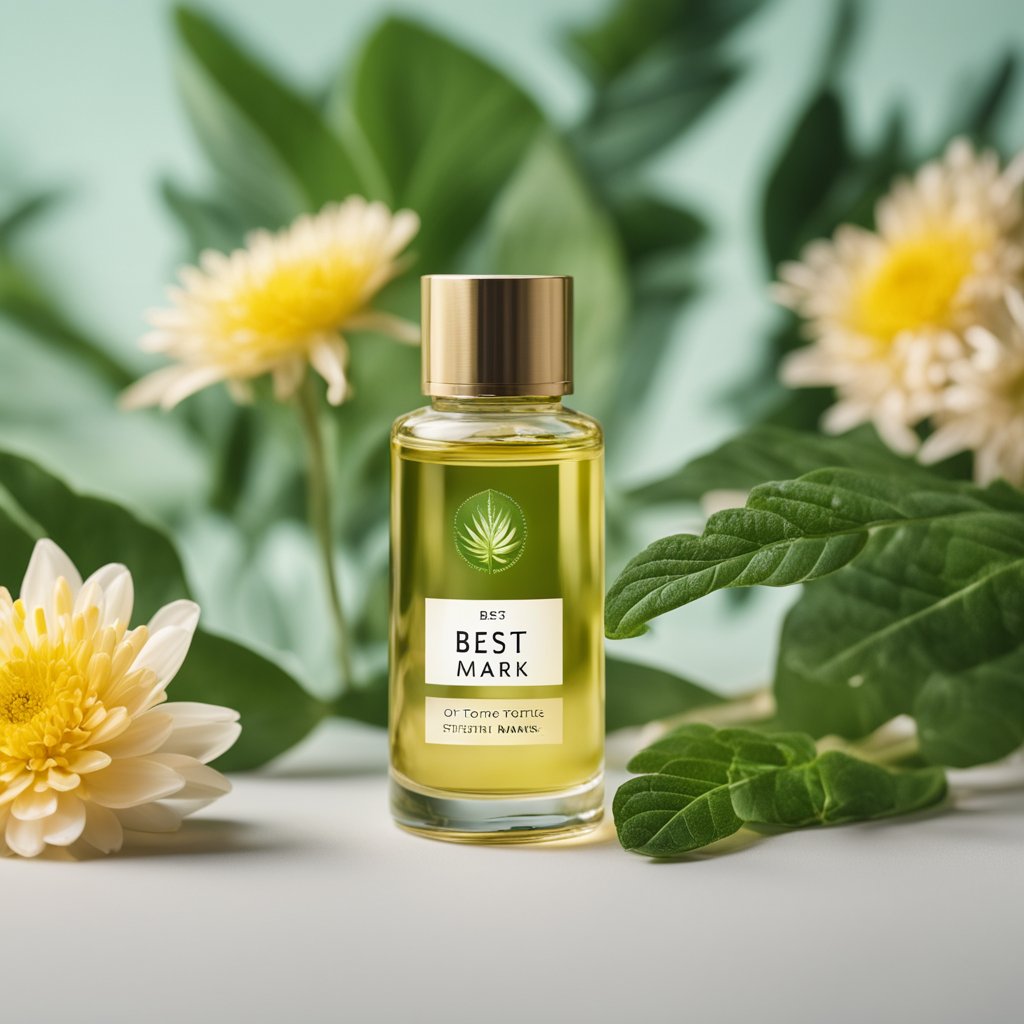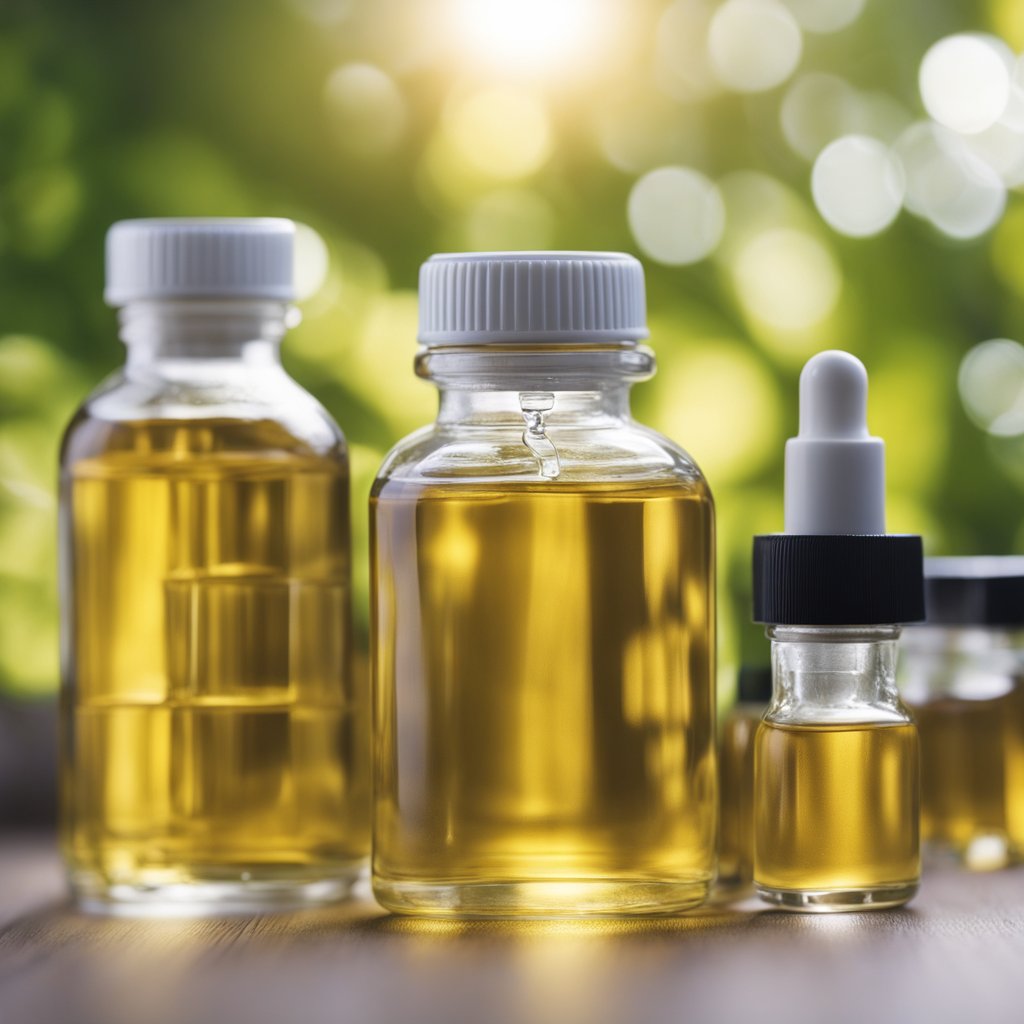Stretch marks are a common concern for many individuals, as they can appear during periods of rapid growth, weight gain, or pregnancy. While entirely natural, some people seek ways to minimize their appearance. Fortunately, certain oils have properties that may help to moisturize and heal the skin, potentially reducing the visibility of these marks. Natural ingredients are often favored for this purpose, as they carry a lower risk of irritation and harness the benefits of plant compounds.

I have found that the efficacy of an oil often depends on its ability to deeply moisturize and support skin elasticity. Using oils rich in vitamins and essential fatty acids can be particularly beneficial. Not all oils are created equal, though; some may serve better as carrier oils, while others contain essential properties that can be more effective when used in conjunction with a comprehensive skin care routine. For those looking into holistic treatments, it’s crucial to choose the right product that aligns with your skin’s needs and the results you’re hoping to achieve.
Key Takeaways
- Moisturizing oils can support skin elasticity and may reduce the appearance of stretch marks.
- A combination of essential and carrier oils can offer a holistic approach to treating stretch marks.
- Selecting an oil should be based on its properties, compatibility with your skin type, and treatment goals.
Understanding Stretch Marks

In discussing the nature of stretch marks, it’s crucial to grasp how they form and their relation to the skin’s complex structure. These marks are not merely superficial lines but are deeply tied to the skin’s integrity and its ability to adapt to physical changes.
Causes and Development
Stretch marks, also known as striae, are lines that develop on the skin when it is stretched rapidly due to sudden growth or weight gain. This rapid stretching can occur during periods such as pregnancy or growth spurts, and it results in tears in the dermis—the middle layer of skin that helps maintain its shape and elasticity. The likelihood and severity of stretch marks are influenced by factors including the skin’s elasticity and the level of stress placed upon it.
- Pregnancy: As the body experiences significant changes, the skin stretches to accommodate a growing baby, often leading to stretch marks on the abdomen, breasts, and thighs.
- Growth Spurts: Adolescents may see stretch marks on their bodies during periods of rapid growth.
- Skin Elasticity: Genetics play a part in determining how elastic an individual’s skin is, which in turn affects the development of stretch marks.
Skin Structure and Stretch Marks
The skin is composed of three primary layers: the epidermis (outer layer), the dermis (middle layer), and the subcutaneous layer (deepest layer). Stretch marks are primarily concerned with the dermis, as it’s where the integrity of skin’s elasticity lies.
- Collagen and Elastin: Two essential proteins in the dermis are collagen, which gives skin strength and firmness, and elastin, which provides, as the name implies, elasticity. When the skin is stretched too quickly, the production of these proteins cannot keep pace, leading to the tearing that manifests as stretch marks.
Understanding the interplay between these factors is fundamental to recognizing why stretch marks occur and sets the stage for exploring effective oils that may aid in their appearance.
Essential Oils for Stretch Marks
I find it important to consider the specific properties of essential oils when selecting one for stretch marks. Their natural composition can offer various benefits to the skin, from hydration to improving elasticity.
Benefits of Rosehip Oil
Rosehip oil is rich in vitamins, particularly Vitamin E and antioxidants which are crucial for skin repair. The use of rosehip oil can improve skin elasticity and foster a more even skin tone. It’s often praised for its ability to diminish the appearance of scars and stretch marks.
- Vitamins: High in Vitamin E and Vitamin A
- Antioxidants: Helps in regenerating damaged skin tissues
Regenerative Properties of Jojoba Oil
Jojoba oil resembles the skin’s sebum, making it highly effective for skin care. Its moisturizing properties ensure the skin remains hydrated which can prevent the formation of new stretch marks.
- Vitamins: Contains Vitamin E and B-complex vitamins
- Skin Regeneration: Promotes new cell growth and is renowned for healing properties
Soothing Effects of Lavender Oil
Lavender oil not only offers a calming scent but also benefits the skin with its anti-inflammatory properties. It’s a gentle option that helps to soothe and heal the skin, reducing the redness and appearance of stretch marks.
- Anti-inflammatory: Reduces skin inflammation and promotes healing
- Allergic Reactions: Always test for potential reactions as every skin type is different
While neroli oil is not one of the subsections, I acknowledge its beneficial properties in improving skin elasticity and should not be overlooked when considering essential oils for skin care. It’s important to ensure proper skin tolerance by conducting a patch test before extensive use of any essential oil.
Carrier and Plant Oils
Choosing the right oil for stretch marks can be pivotal in caring for your skin. The oils listed below are renowned for their specific properties that aid in skin nourishment, hydration, and elasticity enhancement.
Almond Oil and Skin Nourishment
Almond oil, particularly sweet almond oil, is prized for its high concentration of vitamin E and essential fatty acids, which can deeply nourish the skin. My findings indicate it’s excellent for improving the overall appearance and feel of the skin, potentially reducing the visibility of stretch marks.
- Vitamin E Content: High
- Essential Fatty Acids: Omega-3 and Omega-6
- Benefits: Moisturizing, Improves skin texture
- Texture: Light, Non-greasy
- Fragrance: Mild, Nutty
Sweet almond oil can be ideal for expecting mothers as it’s typically gentle and fragrance-free, reducing the risk of skin irritation.
Hydration Offered by Coconut Oil
Coconut oil is highly regarded for its moisturizing properties. It’s rich in vitamin E and saturated fats, which help in retaining moisture in the skin, and it absorbs quickly, preventing a greasy residue.
- Key Components: Saturated Fats, Vitamin E
- Hydration Quality: Intense
- Skin Absorption: Rapid
- Additional Benefit: Can be used in hair and on the body
I recommend using virgin coconut oil for its minimal processing and maximal nutrient preservation, ensuring your skin receives the best care.
Argan Oil for Elasticity Improvement
Argan oil stands out for its antioxidant properties due to the presence of vitamin E and essential fatty acids. This combination works to enhance skin elasticity, which might help in minimizing stretch marks.
- Antioxidants Present: Vitamin E, Polyphenols
- Elasticity Improvement: Significant
- Usage: Regular application
- Sensation: Silky, Non-irritating
My research shows that argan oil is particularly effective when used consistently, as the nutrients take time to improve skin elasticity. It’s also known for its gentle feel on the skin, making it suitable for frequent use.
Holistic Treatment and Prevention
In managing stretch marks, I recognize that addressing overall skin health is as important as topical treatments. I’ll focus on how diet and nutrition can play a pivotal role in the health of my skin.
Role of Diet and Nutrition
My dietary choices directly influence my skin’s elasticity and ability to heal, which are vital in the prevention and treatment of stretch marks. I aim for a well-balanced diet rich in nutrients that support skin health:
- Hydration: Drinking enough water is crucial. Proper hydration ensures that my skin remains supple and has better elasticity, potentially preventing stretch marks.
- Vitamins: Particularly vitamin C, E, and A, as well as zinc, support collagen production. Collagen is the protein that keeps my skin firm and helps in healing.
- High-Protein Foods: Foods like chicken, fish, beans, and nuts are rich in proteins that are essential for the repair and regeneration of skin tissues.
Incorporating these elements in my diet is a constructive step towards maintaining healthy skin and minimizing the risk of developing stretch marks.
Choosing the Right Product
When selecting an oil for stretch marks, it’s crucial to understand the ingredients and how they interact with different skin types to prevent adverse reactions.
Understanding Ingredients
In my research for effective stretch mark oils, I prioritize those rich in vitamins like Vitamin E and Vitamin A, as these are known for skin repair and increased elasticity. It’s important to look for oils with natural ingredients, as they tend to be gentler on the skin.
Key Ingredients:
- Vitamin E: Helps with skin repair.
- Vitamin A: Promotes skin elasticity.
I also recommend opting for products that are paraben-free, fragrance-free, and dye-free to minimize the risk of irritation, especially for sensitive skin types.
Skin Types and Reactions
Different skin types require different care, so it’s essential to choose an oil compatible with your skin. Oils that are dermatologist recommended generally offer a higher assurance of being suitable for a variety of skin types, including sensitive skin.
Skin Type Recommendations:
- Oily Skin: Non-comedogenic oils to prevent clogged pores.
- Dry Skin: Richer, more moisturizing oils.
- Sensitive Skin: Fragrance-free and hypoallergenic options to lessen irritation.
For individuals with a history of allergic reactions, it’s advisable to conduct a patch test before fully incorporating any new oil into your routine. This can help you identify any potential skin irritation or allergic reaction.
Frequently Asked Questions
In my research on stretch mark remedies, I’ve found a range of oils that can be beneficial. Each oil has unique properties and effectiveness, particularly for different stages such as prevention or treatment.
Which oil is most recommended for preventing stretch marks during pregnancy?
I suggest almond oil as a top choice for preventing stretch marks during pregnancy. Its high vitamin E content and emollient properties are known to nurture the skin and improve elasticity.
How effective is Bio Oil in the treatment of stretch marks?
Bio Oil is formulated to improve the appearance of stretch marks. Its blend of vitamins and plant extracts, along with the breakthrough ingredient PurCellin Oil™, helps in increasing skin elasticity and promoting regeneration.
Can the application of argan oil improve the appearance of stretch marks?
Argan oil, rich in vitamin E and essential fatty acids, may help to hydrate the skin and improve its elasticity, thereby reducing the severity of stretch marks.
What are the benefits of jojoba oil when used on stretch marks?
Jojoba oil bears a strong resemblance to the natural oils produced by the skin. This makes it effective in moisturizing and may help to repair damaged skin layers, easing the appearance of stretch marks.
Are there oils that can help remove stretch marks quickly?
No oil can remove stretch marks “quickly”; however, consistent application of oils like rosehip and tamanu can support the skin’s healing process, potentially making stretch marks less noticeable over time.
Between argan oil and jojoba oil, which one is better for managing stretch marks?
It’s not about which oil is better, but what works for your skin type. Argan oil is highly nourishing, whereas jojoba is deeply hydrating. I find both can be effective for managing stretch marks, depending on individual skin needs.